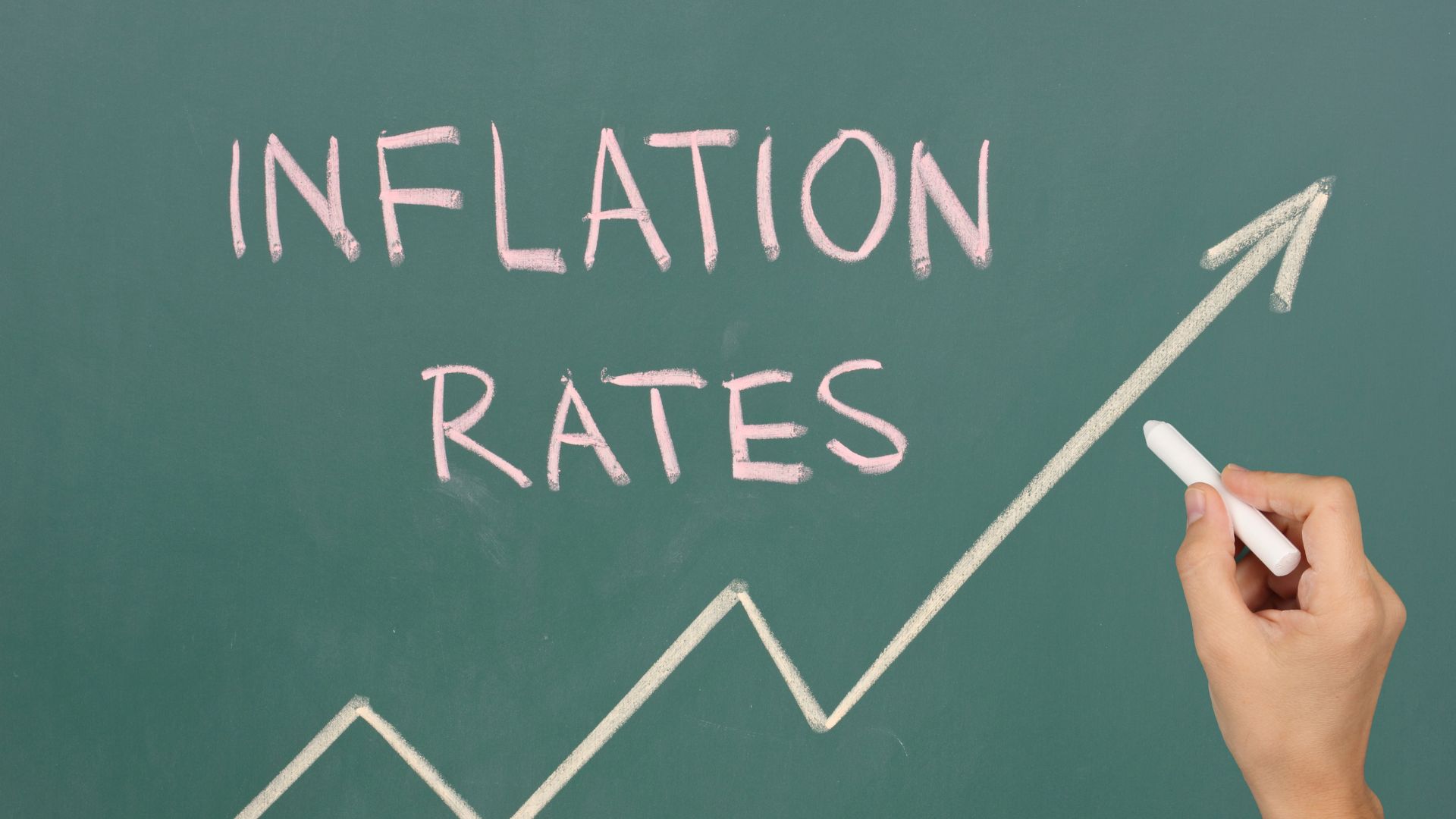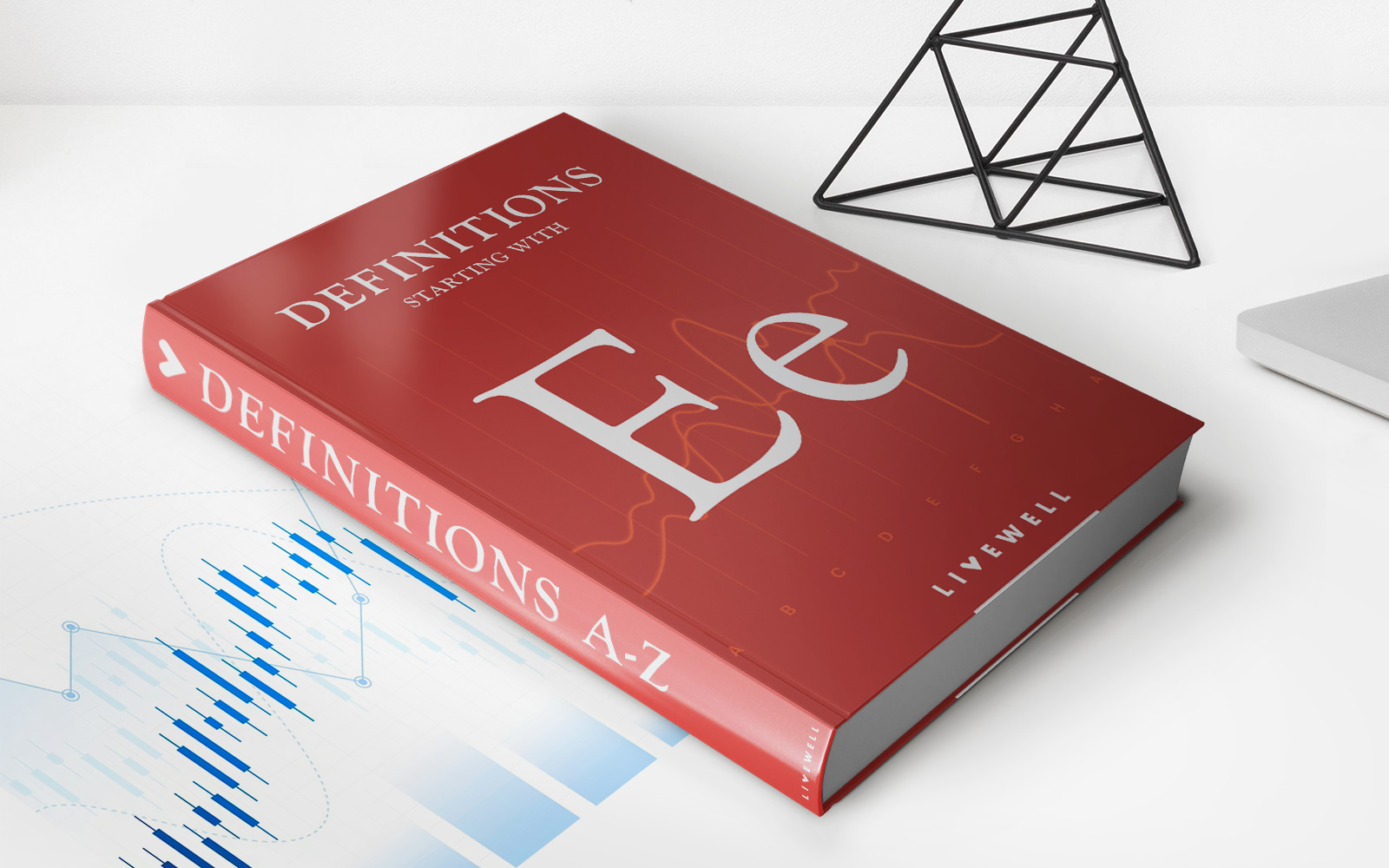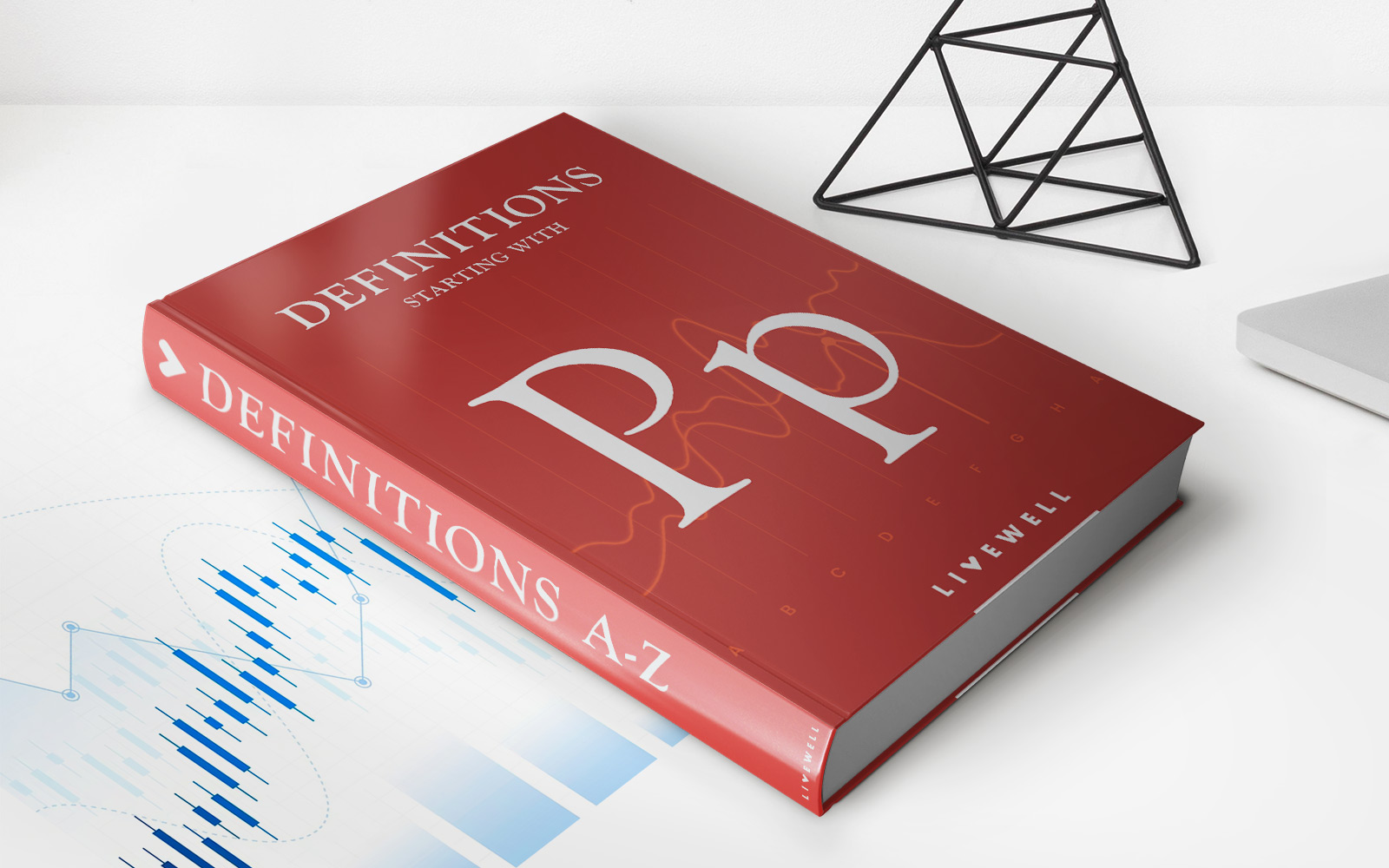Home>Finance>What Inflation Rate To Use For Retirement Planning


Finance
What Inflation Rate To Use For Retirement Planning
Published: January 21, 2024
Choose the right inflation rate for retirement planning with finance in mind. Ensure your financial future is protected with accurate inflation projections.
(Many of the links in this article redirect to a specific reviewed product. Your purchase of these products through affiliate links helps to generate commission for LiveWell, at no extra cost. Learn more)
Table of Contents
- Introduction
- Understanding inflation and its impact on retirement planning
- The different inflation rates and their significance
- Official inflation rates and limitations
- Historical inflation rates and their relevance for retirement planning
- Projected inflation rates and their implications
- Evaluating and selecting an appropriate inflation rate for retirement planning
- Adjusting retirement goals and savings for inflation
- Implementing strategies to combat inflation during retirement
- Conclusion
Introduction
Retirement planning is a critical financial endeavor that requires careful consideration of various factors. One key element that often gets overlooked is the impact of inflation. Inflation refers to the general increase in prices of goods and services over time, eroding the purchasing power of money. For retirees, the effects of inflation can be particularly detrimental, as they are typically living on a fixed income.
Considering the long-term nature of retirement, it is essential to account for inflation when planning for financial security in the golden years. However, determining the appropriate inflation rate to use in retirement planning can be challenging, as there are multiple inflation rates available and significant variations between them.
In this article, we will explore the different inflation rates and their significance in retirement planning. We will examine official inflation rates, historical inflation rates, and projected inflation rates, and discuss how to evaluate and select an appropriate rate for retirement planning. We will also explore strategies to combat inflation during retirement, as well as how to adjust retirement goals and savings to account for inflation.
By understanding the complexities of inflation and its impact on retirement planning, individuals can make informed decisions to safeguard their financial future. Let’s delve into the intricacies of inflation rates and discover how they can be effectively incorporated into retirement planning.
Next, we will explore the different types of inflation rates and their significance in retirement planning.
Understanding inflation and its impact on retirement planning
Inflation is a fundamental economic concept that refers to the gradual increase in prices of goods and services over time. It is measured by the inflation rate, which is the percentage change in the average price level of a basket of goods and services over a specific period.
When it comes to retirement planning, understanding the impact of inflation is crucial. Over the years, the cost of living tends to rise, meaning that a fixed amount of money will be able to buy less and less. This erosion of purchasing power can have a significant impact on retirees, as their expenses continue to increase while their income remains stable.
The effect of inflation on retirement planning is twofold. First, it impacts the cost of living during retirement. Expenses such as housing, healthcare, food, and utilities are subject to inflation, which means retirees will require more money to maintain their standard of living over time.
Second, inflation affects the growth of retirement savings. If the rate of inflation is higher than the rate of return on investments, the real value of the retirement nest egg diminishes over time. This means that even if the nominal value of the savings increases, it may not be enough to keep up with the rising cost of living.
For example, let’s say a retiree has $500,000 in savings and expects to live for 30 years. If the average inflation rate is 2% per year, the retiree will need an additional $296,454 just to maintain their purchasing power at the end of those three decades. Without factoring in inflation, the retiree may deplete their savings prematurely or find it challenging to cover essential expenses in the later years of retirement.
Considering the long-term nature of retirement, it is essential to incorporate inflation into the financial planning process. By accounting for inflation, individuals can estimate a more accurate retirement savings goal and make provisions for the rising cost of living.
Next, we will explore the different types of inflation rates and their significance in retirement planning.
The different inflation rates and their significance
When it comes to measuring inflation, there are several different rates that can be utilized, each serving a specific purpose. It’s important to understand the distinctions between these rates and their significance in retirement planning.
The most commonly used inflation rate is the Consumer Price Index (CPI). The CPI measures the average change in prices of a basket of goods and services consumed by households over time. It provides a comprehensive view of inflation and is widely used as a benchmark for cost-of-living adjustments in retirement benefit programs, like Social Security.
Another important inflation rate is the Core Inflation rate. This rate excludes volatile sectors like food and energy, aiming to reflect a more stable measure of inflation. The Core Inflation rate is often used by policymakers and central banks to make informed decisions on monetary policy.
In addition to the CPI and Core Inflation rates, there are other inflation measures depending on specific industries or regions. For instance, the Producer Price Index (PPI) measures the average change in prices faced by producers of goods and services, reflecting inflationary pressures upstream in the supply chain. This index can be useful for businesses that rely on raw materials or intermediate goods.
Each inflation rate has its significance in retirement planning. The CPI is valuable for estimating the general rate of price increases that retirees will likely face. It provides a useful benchmark for calculating cost-of-living adjustments and helps individuals assess the adequacy of their retirement savings.
The Core Inflation rate, on the other hand, can provide insight into long-term trends in inflation. By excluding volatile sectors, it offers a more stable measure that may be beneficial when projecting future expenses during retirement.
It’s important to consider that no single inflation rate can perfectly capture the individual circumstances and expenses of retirees. Everyone’s spending patterns and needs are unique, and inflation rates can vary across different goods and services. However, utilizing multiple inflation rates or considering alternative measures can provide a more comprehensive view of inflation and help individuals make more informed retirement planning decisions.
In the next section, we will explore the limitations of official inflation rates and the relevance of historical inflation rates for retirement planning.
Official inflation rates and limitations
Official inflation rates, such as the Consumer Price Index (CPI), are widely used as indicators of inflation and can be helpful in retirement planning. However, it’s important to understand their limitations and consider them critically when making financial decisions.
One limitation of official inflation rates is that they are typically based on average price changes for a broad basket of goods and services. This means that they may not accurately reflect the specific expenses and consumption patterns of individual retirees. For example, healthcare costs, which are a significant expense for many retirees, may not be fully captured by the CPI.
Another limitation is that official inflation rates are based on historical data and may not always reflect current or future economic conditions. Inflation rates can fluctuate due to various factors, such as changes in government policies, global events, or technological advancements. Therefore, it is crucial to consider the potential for inflation to deviate from historical trends when planning for retirement.
Moreover, official inflation rates may not account for changes in quality or substitution of goods and services over time. For instance, if the price of a particular brand of a product increases, consumers may switch to a more affordable alternative. Official inflation rates may not fully capture this substitution effect, which can impact the accuracy of estimating real-world inflation.
An additional limitation is that official inflation rates may not reflect regional or individual variations. Inflation rates can vary across different geographic areas due to factors like local supply and demand dynamics. Similarly, retirees may have unique spending patterns or live in areas with different cost structures, which may not align with national inflation rates.
Despite these limitations, official inflation rates still provide valuable insights into the overall trend and direction of inflation. They serve as a starting point for estimating the impact of inflation on retirement savings and can be useful for making general projections.
However, it is crucial for individuals to supplement official inflation rates with personal research and analysis. This may include considering alternative inflation measures, monitoring specific expenses, and exploring regional or industry-specific inflation data. By taking a more comprehensive approach, retirees can better understand the potential impact of inflation on their financial well-being during retirement.
In the next section, we will discuss the relevance of historical inflation rates and how they can inform retirement planning decisions.
Historical inflation rates and their relevance for retirement planning
Examining historical inflation rates can provide valuable insights when planning for retirement. Analyzing past trends can help individuals understand the potential impact of inflation on their savings and better prepare for future financial needs.
Historical inflation rates serve as a reference point for estimating the average rate of price increases over a specific period. By looking at the past, retirees can gain an understanding of how inflation has affected their purchasing power and adjust their retirement plans accordingly.
Retirees can review historical inflation rates to assess the long-term average and identify periods of higher inflation. This analysis can provide a clearer picture of how inflation may impact their retirement savings and help set realistic financial goals for the future.
Additionally, historical inflation rates can inform individuals about the potential variability of inflation over time. They may reveal periods of low inflation, deflation, or periods of high inflation. Understanding these fluctuations can help retirees anticipate and plan for potential economic scenarios during their retirement years.
Another use of historical inflation rates is to calculate the future value of money. By factoring in the historical average inflation rate, retirees can estimate the purchasing power of their savings at different points in the future. This information can guide their investment decisions and help them determine how much they need to save to maintain a comfortable lifestyle during retirement.
However, it is important to note that historical inflation rates are not a guarantee of future inflation patterns. Economic conditions and factors influencing inflation can change over time. Therefore, retirees should use historical inflation rates as a guide and consider other factors, such as current market conditions and projections, when planning for retirement.
Retirees can access historical inflation data from various sources, including government publications, financial institutions, and economic research organizations. It is advisable to use reputable sources to ensure the accuracy and reliability of the data.
By analyzing historical inflation rates, retirees can gain insights into the potential effects of inflation on their retirement savings. This information can assist in setting realistic goals, making strategic financial decisions, and ensuring a more secure financial future during retirement.
In the next section, we will discuss projected inflation rates and their implications for retirement planning.
Projected inflation rates and their implications
Projected inflation rates play a crucial role in retirement planning as they help individuals anticipate and prepare for potential future increases in the cost of living. While projections are not precise, they provide a basis for making informed financial decisions.
Economists, financial institutions, and research organizations often provide projections for future inflation rates. These projections are based on various factors such as current economic conditions, monetary policies, and forecasts of key indicators like GDP growth and employment rates.
Retirement planning requires considering projected inflation rates to estimate the future value of money and determine the adequacy of savings. By factoring in projected inflation, individuals can more accurately assess their retirement goals and adjust their savings strategies accordingly.
Higher projected inflation rates would suggest that retirees may need to save more in order to maintain their desired lifestyle throughout retirement. Conversely, lower projected inflation rates may indicate that retirees may need to save less, although it’s important to remember that unexpected changes in inflation can still occur.
Projected inflation rates also influence investment decisions during retirement. Retirees need to balance their portfolios to account for potential inflationary pressures. Investments that can outpace inflation, such as stocks, real estate, or inflation-protected bonds, may help ensure that their savings retain their purchasing power over time.
However, it’s important to note that projections come with uncertainties and are subject to change. Economic conditions can shift, and unexpected events can impact inflation rates. Therefore, retirees should regularly review and update their projections to make necessary adjustments to their retirement plans.
It’s also worth considering multiple projections and using a range of scenarios to gauge the potential impact on retirement savings. This can help individuals prepare for different inflationary environments and mitigate the risk of relying on a single projection.
In addition to considering projected inflation rates, retirees should stay informed about current economic trends and regularly assess their financial situation. This proactive approach allows for adjustments to savings strategies, investment allocations, or retirement spending plans as needed.
While projected inflation rates provide a guideline for retirement planning, it’s important to strive for flexibility and adaptability. By staying informed, regularly reassessing financial goals, and utilizing a range of projections, retirees can better prepare for potential inflationary scenarios and maintain financial security throughout retirement.
In the next section, we will discuss how to evaluate and select an appropriate inflation rate for retirement planning.
Evaluating and selecting an appropriate inflation rate for retirement planning
When it comes to selecting an inflation rate for retirement planning, it is crucial to carefully evaluate different options and consider various factors that may impact one’s financial situation. Here are some key considerations for selecting an appropriate inflation rate:
1. Assess your personal expenses: Begin by analyzing your individual spending patterns and identifying the categories that make up a significant portion of your budget. Consider the inflation rates specific to those categories, as they may differ from the overall inflation rate.
2. Review historical inflation data: Examine historical inflation rates to gain insights into past trends and fluctuations. Look for periods of high or low inflation and consider how they might have affected your purchasing power. This can help you set expectations for future inflation rates.
3. Explore government data and official inflation rates: Consider utilizing official inflation rates, such as the Consumer Price Index (CPI), to gauge the general trend of inflation. While they may not capture every expense, they offer a benchmark that can guide your planning process.
4. Consider alternative inflation measures: In addition to official inflation rates, explore alternative measures that may align more closely with your personal circumstances. For example, industry-specific inflation rates or regional inflation data can provide a more accurate reflection of your specific expenses.
5. Evaluate future projections: Take into account projected inflation rates provided by economists and financial institutions. These projections can provide insights into potential inflationary trends, allowing you to make more informed decisions about your retirement savings and investment strategy.
6. Consult with financial advisors: Seek professional advice from financial advisors who have expertise in retirement planning. They can help you analyze your financial goals, understand inflation’s impact, and guide you in selecting an appropriate inflation rate based on your specific needs.
Remember, retirement planning involves making assumptions about many variables, including inflation. It is important to reassess and adjust your inflation rate periodically as economic conditions change, and new data becomes available.
Ultimately, the goal is to select an inflation rate that aligns with your individual circumstances, provides a realistic estimate of future cost-of-living increases, and helps you make informed decisions about your retirement savings and spending plans.
In the next section, we will explore how to adjust retirement goals and savings for inflation.
Adjusting retirement goals and savings for inflation
One of the key aspects of retirement planning is accounting for inflation and adjusting retirement goals and savings to ensure long-term financial stability. Here are some steps to consider when adjusting for inflation:
1. Recalculate retirement goals: Take into account the potential impact of inflation on your retirement expenses. Review your projected expenses, factoring in the expected rate of inflation. This will help you set more realistic retirement goals that account for the increased cost of living over time.
2. Increase savings contributions: To combat the effects of inflation, consider increasing your savings contributions. By saving more now, you can help offset the erosion of purchasing power caused by inflation in the future. Evaluate your budget and identify areas where you can allocate more money towards retirement savings.
3. Utilize inflation-adjusted retirement accounts: Explore investment options that offer inflation adjustments, such as inflation-protected securities (TIPS) or certain retirement accounts that account for inflation, like inflation-adjusted annuities. These vehicles can provide a hedge against inflation and help ensure that your savings keep pace with rising prices.
4. Rebalance your investment portfolio: As you plan for inflation, consider adjusting your investment portfolio to include assets that have historically shown resilience against inflation. Investments such as stocks, real estate, or commodities may offer potential for growth that outpaces inflation. Diversifying your portfolio can help protect your savings from the impact of rising prices.
5. Regularly review and adjust your plan: Inflation rates can change over time, so it’s important to review your retirement plan regularly and reassess your inflation assumptions. Stay informed about economic trends, monitor market conditions, and make necessary adjustments to your retirement savings and investment strategy to ensure your plan remains on track.
6. Opt for cost-of-living adjustments (COLAs): If you have retirement benefits or investments that offer cost-of-living adjustments (COLAs), take full advantage of them. COLAs can help your income keep pace with inflation, providing a steady stream of funds to cover rising expenses during retirement.
By adjusting your retirement goals and savings for inflation, you can better position yourself for a financially secure future. A proactive approach to addressing inflation ensures that your retirement plan remains adaptable and resilient in the face of economic changes.
In the next section, we will explore strategies to combat inflation during retirement.
Implementing strategies to combat inflation during retirement
As retirees face the challenge of maintaining their purchasing power in the face of inflation, it becomes vital to implement strategies that can effectively combat the eroding effects of rising prices. Here are some strategies to consider:
1. Invest in inflation-protected assets: Allocate a portion of your retirement portfolio to inflation-protected assets such as Treasury Inflation-Protected Securities (TIPS) or inflation-adjusted annuities. These investments provide a hedge against inflation by adjusting their returns or payouts in line with changes in the Consumer Price Index (CPI) or other inflation measures.
2. Diversify your investment portfolio: A well-diversified portfolio can help mitigate the impacts of inflation. Consider including a mix of asset classes, such as stocks, bonds, real estate, and commodities. Different assets may react differently to inflation, and diversification helps ensure that your savings are not overly exposed to a single type of investment.
3. Maintain a balanced approach to risk: While it’s essential to aim for investments that can outpace inflation, it’s also crucial to avoid excessive risk. Consult with a financial advisor to strike the right balance and select investments that align with your risk tolerance and retirement goals.
4. Continue working, part-time: If possible and desirable, consider working part-time during retirement. This can provide an additional income stream that can help offset the impact of inflation. Not only does this contribute to your financial security, but it can also provide a sense of purpose and fulfillment during retirement.
5. Adjust spending habits: Be conscious of your spending habits and find ways to cut costs or identify areas where you can make substitutions. Prioritize essential expenses and evaluate non-essential expenditures that can be reduced without affecting your quality of life. By being mindful of your spending, you can stretch your retirement income further and navigate inflationary pressures more effectively.
6. Stay informed and review your plan regularly: Keep yourself updated on economic trends and changes in inflation. Monitor your retirement plan regularly and seek professional advice if necessary. Review and adjust your investment strategy and retirement goals as needed to adapt to changing economic conditions.
7. Consider supplemental income sources: Explore potential supplemental income sources during retirement, such as rental properties, part-time consulting or freelancing work, or generating passive income from investments. These additional streams of income can help cushion the impact of inflation and provide financial stability.
By implementing these strategies, retirees can combat the erosive effects of inflation and maintain their purchasing power throughout their retirement years. It is crucial to actively manage your finances, stay informed about economic conditions, and make adjustments to your retirement plan as needed.
In the next section, we will conclude our discussion on the importance of accounting for inflation in retirement planning.
Conclusion
Accounting for inflation is a critical aspect of retirement planning that should not be overlooked. As prices of goods and services continue to rise over time, the purchasing power of retirement savings can diminish if not properly addressed. By understanding the impact of inflation and implementing appropriate strategies, retirees can safeguard their financial well-being and maintain their desired lifestyle throughout retirement.
Throughout this article, we explored the various types of inflation rates and their significance for retirement planning. We discussed official inflation rates like the Consumer Price Index (CPI) and the limitations associated with them. We also examined historical inflation rates and their relevance in providing insights into past trends and future projections.
Projected inflation rates were also a focal point, highlighting the importance of considering economic forecasts when estimating future retirement expenses. With these projections, retirees can adjust their savings strategies, investment portfolios, and retirement goals accordingly.
We also explored how to evaluate and select an appropriate inflation rate for retirement planning, emphasizing the need to assess personal expenses, review historical data, consider alternative measures, and seek professional guidance. Making informed decisions based on these factors ensures a more accurate estimation of retirement needs.
To combat the effects of inflation during retirement, we discussed implementing strategies such as investing in inflation-protected assets, diversifying investment portfolios, continuing part-time work, adjusting spending habits, and staying informed. By employing these strategies, retirees can better navigate inflationary pressures and maintain their financial stability in the long run.
In conclusion, incorporating inflation into retirement planning is essential for maintaining financial security. By understanding the impact of inflation, evaluating different inflation rates, and implementing appropriate strategies, individuals can make informed decisions that protect their retirement savings and ensure a comfortable and fulfilling retirement lifestyle.
Remember, retirement planning is an ongoing process, and adjustments may need to be made as economic conditions change. Regularly reviewing and reassessing your retirement plan will help you stay on track and adapt to evolving inflationary trends.
Start considering inflation in your retirement planning today. Your future self will thank you for taking proactive steps to secure your financial well-being during your golden years.














